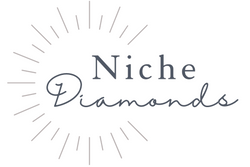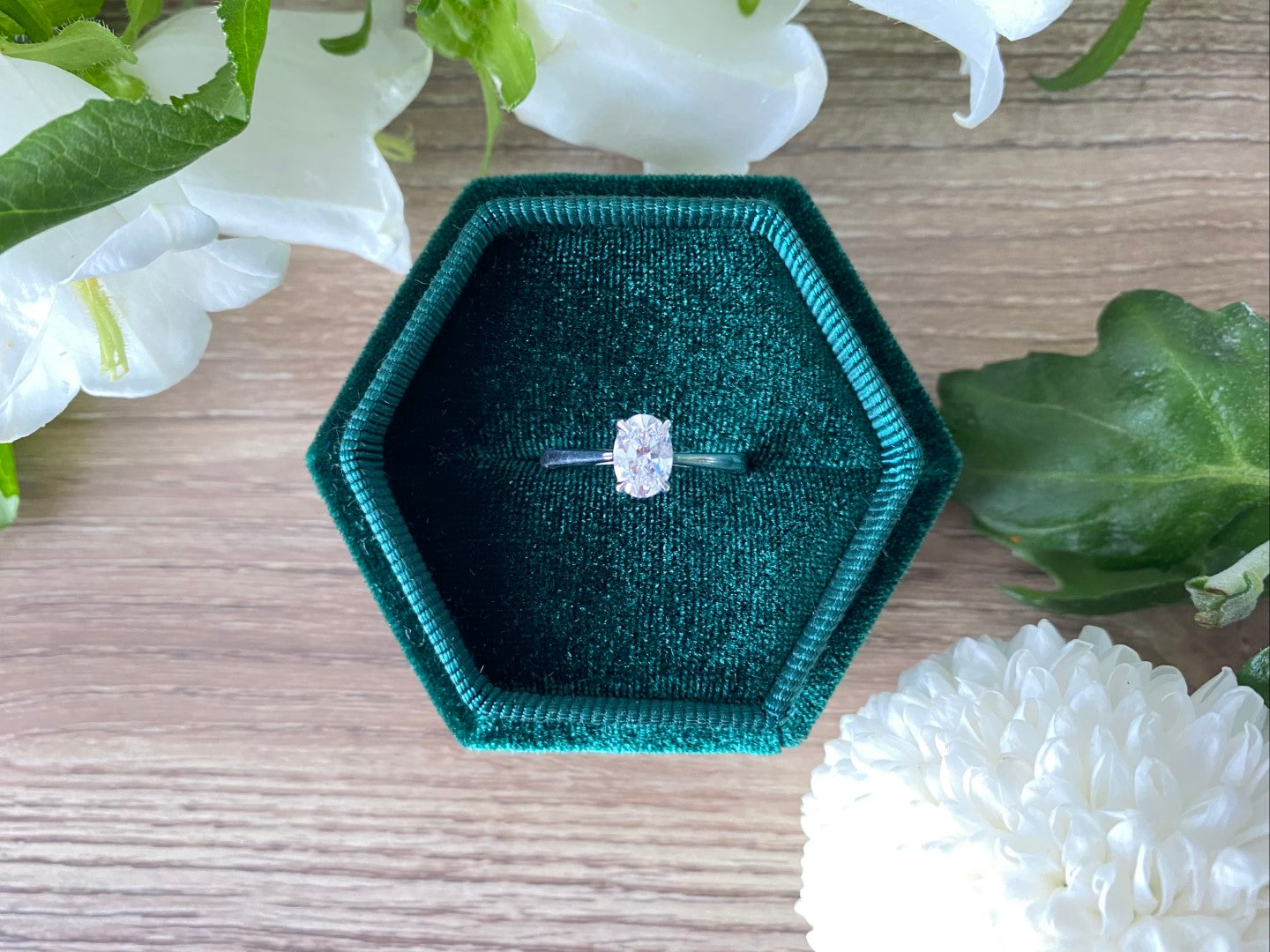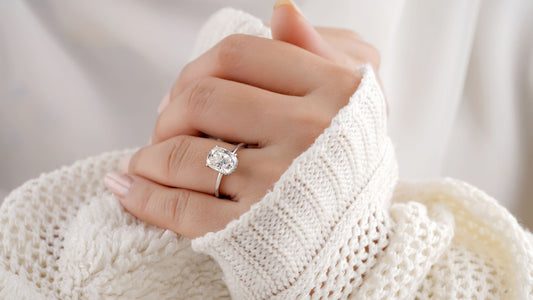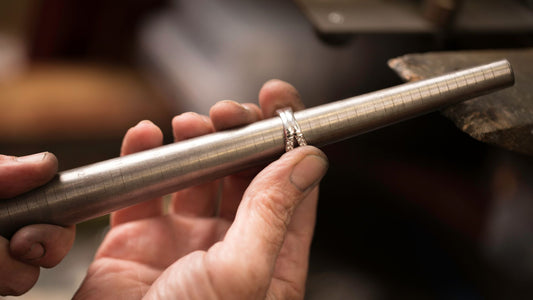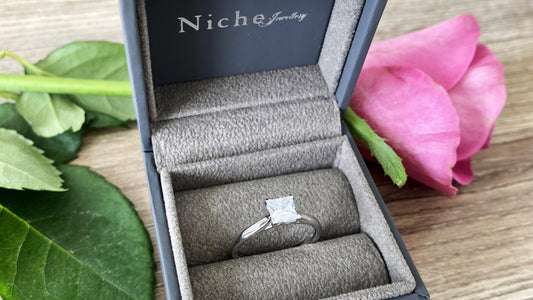Yes, we know, it’s confusing!
If you’ve been looking at diamond rings, chances are you’ve probably come across a lot of fancy language around the importance of the ‘4Cs’. We realise that to anyone who’s not a diamond expert, this can seem rather complicated and overwhelming. To help, we’ve put together a simple and straightforward explanation of what it all means below.What are the 4Cs and should I care?
The four Cs relate to the cut, clarity, colour and carat of a diamond. In short, all these elements play a role in determining a diamond's quality, appearance, and value.

Some, like the cut you choose, are mostly about personal preference. While others, like clarity and carat weight have a direct impact on the quality and value of the stone in question.
All elements are important when making your choice, because you obviously want to feel confident that you have chosen a good quality stone. But essentially, all of the 4Cs are measured on some sort of scale. And depending on what is most important to you, it is possible to compromise in one area, in order to make your dream ring affordable.
Here’s what you need to know about each of the 4Cs so you can feel fully informed before making your choice.
Diamond cut
The cut defines how well a diamond reflects light and therefore the intensity and brilliance of a stone. This is graded on a scale from excellent to poor. (Here at Niche Diamonds, we only recommend diamonds graded as 'Excellent' or 'Very Good'.)
There are several factors that affect how well a diamond reflects light. These include the proportion, finish, symmetry and polish of a stone.

A well-cut diamond is one that is proportioned, symmetrical, and polished. Stones that meet this criteria will likely be the most expensive, while poorly cut diamonds are lower in value.
But wait, cut also means...
Just to be confusing, cut can also refer to the style of the diamond or the shape in which a stone is cut. This is where terms like ‘princess cut’, ‘round cut’, ‘emerald’ or ‘cushion cut’ come in.
Below are some of the most popular diamond shapes, but new ways of cutting stones are being created all the time.

Whilst the brilliant cut diamond is always popular, as you can see, there’s plenty of choice available. So if you like the idea of something a bit different, an alternative diamond shape is a great way to make your ring unique.
Diamond clarity
Diamonds are ranked according to the quantity and visibility of flaws, known as their clarity. The clarity scale runs between IF and I3, with 'Internally Flawless' (IF) the most ‘clear’ and valuable end of the scale.
But it’s important to remember that most diamonds will naturally have some flaws and small inclusions aren’t visible to the naked eye. Moving down the clarity scale can make your diamond more affordable and your stone will likely still look perfect, unless you’re looking at it under a magnifying glass.

Talk to our experts about what kind of stone you’re looking for and we can guide you through the different choices on offer.
Diamond colour
Although we think of diamonds as white, most actually range in colour from colourless to faint yellow. According to the authority on diamond certification (the experts at the Gemological Institute of America or GIA) the ideal diamond is colourless. But it’s less common to find one of these. Most diamonds are either very slightly yellow or brown in tone, although again this isn’t usually visible without a microscope.
Diamonds are graded from D (colourless) to Z (very tinted). Only diamonds from N onwards on the scale are visibly coloured and beyond S the colour becomes more intense. Here’s where it starts to get complicated however, as any stone classed as J or above can still be beautiful as long as it has good clarity and cut. It’s just another element to consider when managing your budget.
Every diamond is different, and many factors affect its beauty and value. But when talking about colour on its own, at Niche Diamonds our hero diamond colour is F. Whilst D to F grades are all considered colourless, F is generally the most affordable of these grades.
What are fancy diamonds?
We should also probably mention at this point what’s known as ‘natural fancy diamonds’. These are diamonds that come in a more intense range of colours, from yellow to red and blue. They are much rarer than white diamonds but can be stunning and another way to make your ring unique. Talk to our team if this interests you.Diamond carat weight
Carats are all about weight. The carat doesn’t affect the quality of a diamond, it’s purely a measurement of how much a stone weighs.
This may sound simple enough, but as usual, there's a twist! Different cuts can make stones appear larger than they are.
That is, a one carat round diamond is the same weight as a one carat pear shaped diamond, yet the pear cut diamond has a larger surface area and so looks larger despite the identical weight. The oval cut, for instance, also gives the illusion of size, because it can actually be quite shallow.

Whereas a round cut diamond may be smaller across the table (or surface) of the stone, but cut much deeper in a point. Which means it actually weighs more and is a higher carat weight.
In short, the higher the carat, the higher the value of the stone. But if you want to make your diamond look bigger without splurging on a huge diamond weight, a different cut is the way to go.
Want to know more? Take a look at our Diamond Guide for more details on the 4cs of diamonds, and beyond.
Looking for inspiration? Browse our collection of solitaire engagement rings, made with love to last a lifetime.
Still got questions? Get in touch with our experienced team to help you demystify diamonds and find your dream ring.
